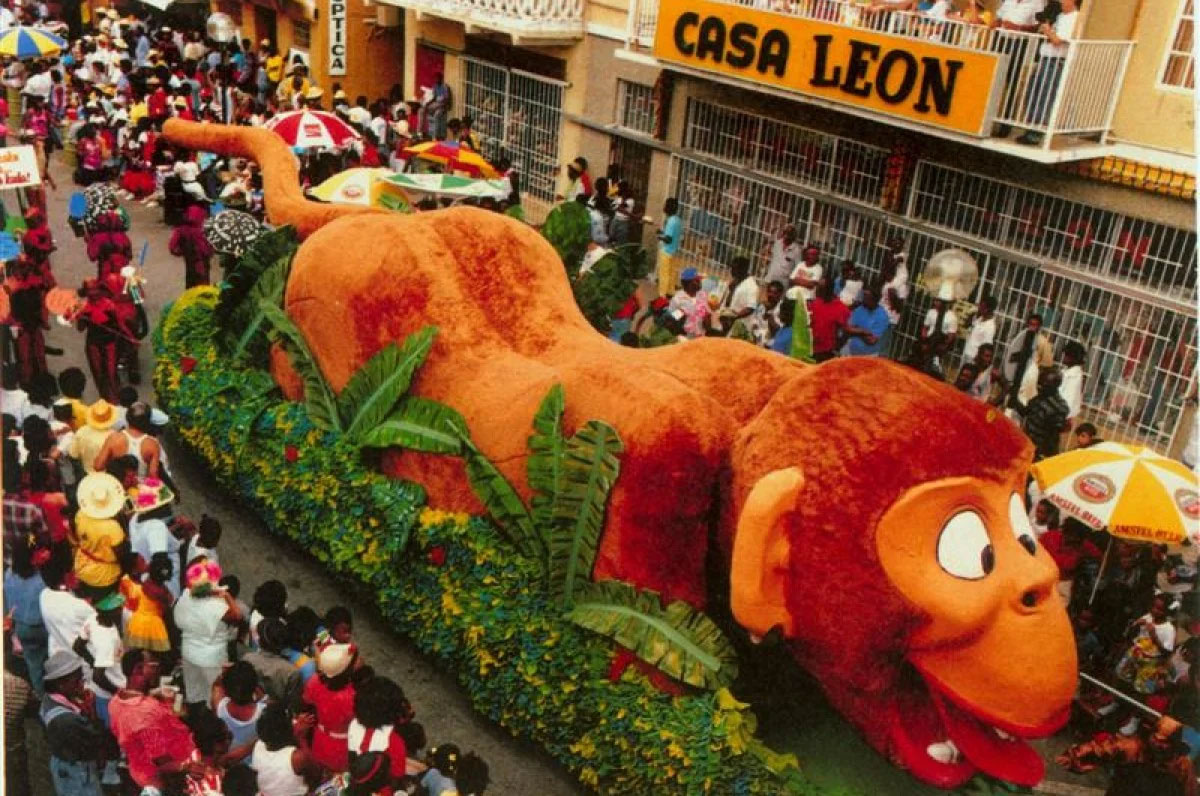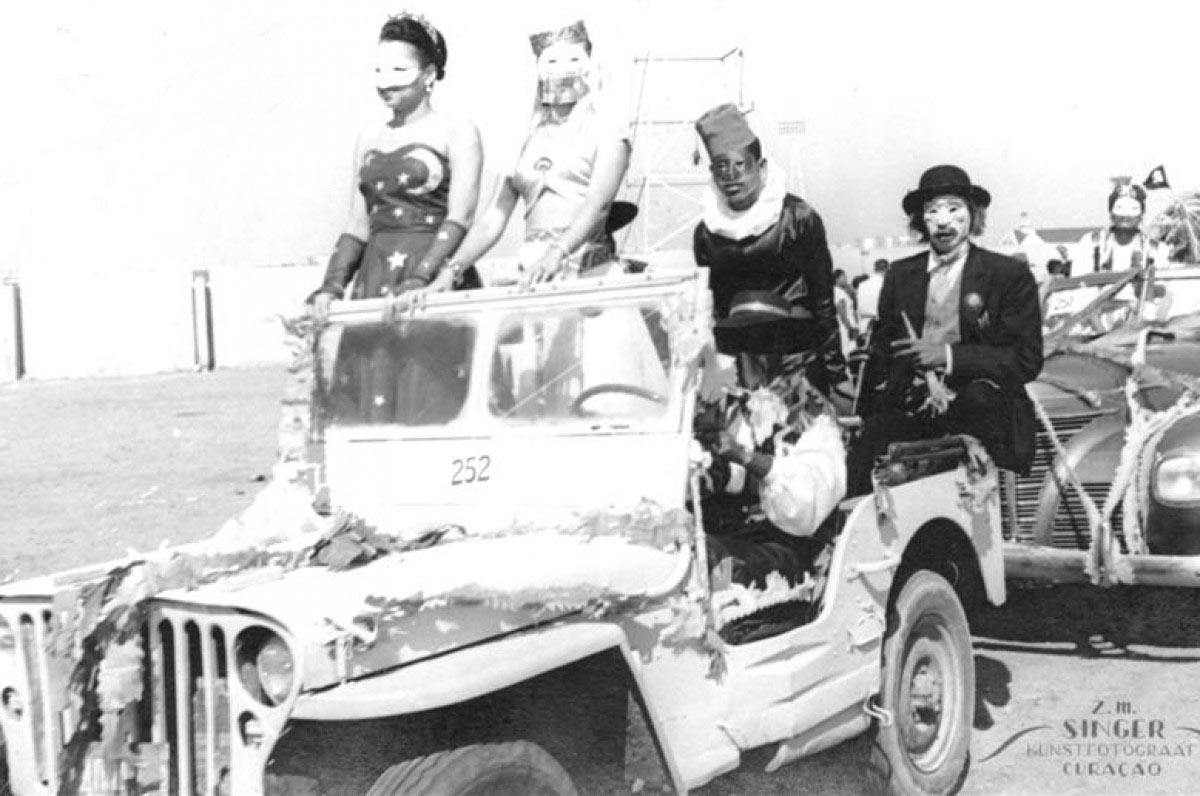Carnival history
Curaçao’s Carnival has come a long way from its simple beginnings and while we look at the future, it’s good to remember the people who made it possible.
History of Curaçao’s Carnival
Firts mention is the “Publicatieblad 1872 nr. 27” This Ordinance opened the possibility to organize and regulate carnival parades in public places.
In 1901 “De Curaçaosche Courant” (Februari, 22) indicates that, “according to Spanish American habits” Carnival was celebrated on the Island. This celebration was an initiative of several Venezuelan citizens who lived here temporarily. The festivities took place in a private elite club, according to “De Curaçaosche Courant” in 1901.
Oral History Sources indicate that “The Jolly Fellows Society” was considered the driving force behind the development of celebrating carnival on the streets for the first time in 1947.
In 1949 a foundation “Stichtingscommissie Carnavalsfeesten” was created to celebrate Carnival with an elected “Prince Carnival”. The intention was to involve the entire population at the celebration. Photo’s show the local participation was meager though. The celebration remained elitist and interest slowed down in the fifties.
Benjamin Wefer and Elias Bronswinkel wanted to generate interest again in 1961 by the establishment of the Central Carnival Committee Curaçao.

In 1971 Carnival gained more popularity again. The Committee Carnival Curacao (Komité Karnaval Kòrsou) was founded that year under the guidance of Omalio Merien and the festivities entered a new era. The Committee aimed at participation of every nationality and gremio of Curacao. The slogan of the 1971 Carnival was “KARNAVAL PA UN I TUR I PA UNI TUR.” (“Carnival for one and all and uniting one and all”). That year the Tumba was introduced as roadmarch. Simple marches were introduced in the streets, starting in Otrobanda over the Emmabridge directed to Mari Pampoen.
The organizing committee was presided by illustrious names like Omalio Merien, Felio Colinet, Frank Rosina i Boy Winklaar. In 1981 the Youth Carnival was introduced. In the nineties the Fundashon Karnaval Kòrsou (FKK) was founded. In these years the march changed its route. Because the Emmabridge was considered to fragile for the big paradebusses the route began at Santa Maria and ended in Otrobanda.
In 1995 Teen Parades were added to the festivities.

Content courtesy of National Archives Curaçao.
